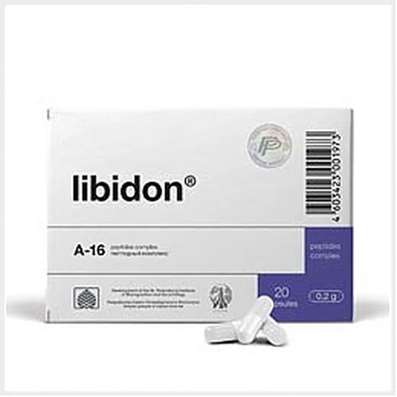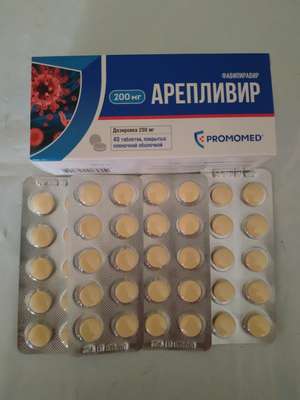Instruction for use: Mildronate (Meldonium)
I want this, give me price
Meldonium (INN), trade-named as Mildronate, Mildronāts also known as Quaterine, MET-88, and THP (for its chemical name, see below) is a limited-market pharmaceutical, developed in 1970 by Ivars Kalviņš, and manufactured primarily by Grindeks of Latvia and several generic manufacturers. It is distributed in Eastern European countries.
Drug formulation: Active substance: meldonium phosphate; 1 tablet contains meldonium phosphate (in terms of meldonium) 500 mg; Adjuvants: mannitol (e 421), povidone k29/32, potato starch, silicon dioxide, microcrystalline cellulose, magnesium stearate.
Indications.
- decreased working efficiency, intellectual and physical overstress (including in athletes);
- for combined therapy of ischemic heart disease (stenocardia, myocardial infarction), chronic cardiac decompensation, and dyshormonal cardiomyopathy;
- for combined therapy of chronic disturbances of brain blood supply (cerebral
- strokes, and cerebrovascular insufficiency);
- diseases of peripheral arteries (DPA);
- abstinence syndrome in case of chronic alcoholism (in combination with specific alcoholism therapy).
Contraindications.
Hypersensitivity to meldonium or any components of the drug. Increased intracranial pressure (in case of impaired venous drainage, intracranialtumours). Pregnancy and breast-feeding periods. Children’s age.
Applied internally.
- Intellectual and physical stress (including in athletes). Adults – 1 g per day divided into two 500mg doses. Course of treatment is 10-14 days. If necessary, the treatment is repeated in 2-3 weeks.
- Athletes should take 500 mg – 1 g twice a day before training. Duration of treatment during preparatory period is 2-3 weeks, during the period of competition – 10-14 days.
- Cardiovascular disease. As part of combined therapy: 500 mg -1 g (1-2 tablets) per day, taking the whole dose at one time or dividing for 2 takings. Course of treatment is 4-6 weeks.
- Cardialgia against the background of dyshormonal myocardiodystrophy – 500 mg per day. Course of treatment is 12 days.
- Disturbed cerebral circulation. In course of treatment after elimination of acute disorders: 500 mg – 1 g per day, taking the whole dose at one time or dividing it for 2 takings. In case of chronic disorders: 500 mg per day. General course of treatment is 4-6 weeks. Recurrent courses (usually 2-3 times a year) may be taken after consulting a doctor.
- Diseases of peripheral arteries. 500 mg twice a day.
- Abstinence syndrome in case of chronic alcoholism. 500 mg 4 times a day.
Course of treatment is 7-10 days.
Maximum daily dose is 2000 mg.
Side effects.
Rarely – allergic reactions (redness, rash, itching, oedema), as well as dyspepsia,
tachycardia, excitement, changes of arterial pressure.
Overdosage.
There is no data of cases of Mildronate® GX overdosage. The drug is low-toxic and
does not cause any side effects which may threaten the health of patients.
Application during pregnancy and breast-feeding periods.
Safety of Mildronate® GX application during the pregnancy period has not been proved. In order to avoid possible negative effect of the drug on foetus, it should not be applied during pregnancy. It is unknown whether the drug penetrates into breast milk. If mother requires treatment with Mildronate® GX, breast-feeding shall be stopped.
Children.
There is no sufficient data about application of Mildronate® GX for treatment of children.
Peculiarities of application.
Patients with chronic liver and renal diseases should take care in case of long-term application of the drug. Due to possible development of stimulating effect it is recommended to take the drug before noon.
Ability to affect rate of reactions when driving or operating other mechanisms
There is no data about Mildronate® GX negative effect on rate of reactions.
Interaction with other drugs and other types of interaction.
The drug may be combined with antianginal agents, anticoagulants and antiaggregants, antiarrhythmic drugs, diuretics, and bronchial spasmolytics. It intensifies the action of coronary vasodilating drugs, some hypotensive agents, and cardiac glycosides. Taking into consideration the possible development of mild tachycardia and arterial hypotension, care should be taken when combining the drug with nitroglycerin, nifediphine, alpha-adrenoceptor blockers, hypotensive agents and peripheral vasodilators.
Pharmacological properties.
Pharmacodynamics. Mildronate® GX is a structural analogue of gammabutyrobetaine, a substance contained in every cell of human organism. Under the conditions of excessive stress meldonium restores balance between oxygen supply and its demand in cells, and removes toxic metabolic products accumulated in cells protecting them from damage; it also possesses tonic effect. In the result of its application the organism receives the possibility to withstand stress and quickly restore its energy reserves. Thanks to these properties Mildronate® GX is used for treatment of various cardiovascular system disorders and brain circulation impairment, as well as for improvement of physical and intellectual working efficiency. Decrease in carnitine concentration results in intensification of synthesis of γ-butyrobetaine which possesses vasodilating properties.
In case of acute ischemic damage of myocardium, meldonium decelerates formation of necrotic zone, and reduces the duration of rehabilitation period. In case of chronically impaired cardiac function, it improves contractive ability of myocardium, increases tolerance to physical stress, and reduces frequency of stenocardia attacks. In case of acute and chronic ischemic disturbances of cerebral circulation, it improves blood circulation in ischemia focus, and stimulates the redistribution of cerebral blood flow for the benefit of ischemic area. The drug eliminates functional disorders of nervous system in patients with chronic alcoholism in case of abstinence syndrome.
Pharmacokinetics.
After having been taken orally, the drug is rapidly absorbed. Its bioavailability is 78%. Maximum concentration in blood plasma is reached in 1-2 hours after intake. It is metabolised mainly in liver with further formation of two basic metabolites excreted by kidneys. Period of half-excretion when taken internally depends on the dose and is 3-6 hours.
Pharmaceutical characteristics.
Main physicochemical properties: white biconvex tablets, oval-shaped with GX stamping on the one side and “500” – on the other side.
Formula
C6H15N2O2+
Molar mass
147.19 g/mol
Systematic (IUPAC) name
2-(2-Carboxylato-ethyl)-1,1,1-trimethylhydrazinium
Physical and chemical properties.
The chemical name of meldonium is 3-(2,2,2-trimethylhydraziniumyl)propionate.[28][29] It is a structural analogue of γ-butyrobetaine, with an amino group replacing the C-4 methylene of γ-butyrobetaine.[citation needed] γ-Butyrobetaine is a precursor in the biosynthesis of carnitine.
Available forms.
Meldonium is sold as 250 mg and 500 mg capsules, and as a 10% solution for injection.

 Cart
Cart





